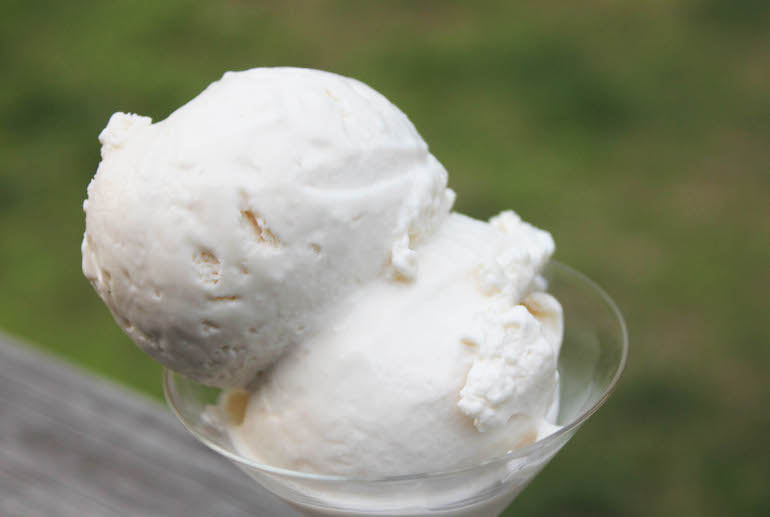With America’s satisfaction with the government at an all-time low, we must remind ourselves of the important roles that government does serve. Most importantly, they regulate what constitutes ice cream to make sure you’re never cheated out of the real deal. And you might be surprised to learn that one popular brand just doesn’t make the cut: Breyers Ice Cream.
According to the FDA, for a product to be labeled “ice cream,” it must meet the following criteria:
1. Ice cream must contain a minimum of 10% milkfat.
2. Ice cream must have no more than 100% overrun (overrun is the volume of air whipped in to the ice cream, expressed as a percent of the volume of ice cream. 100% overrun means that they must whip in enough air to double the volume of the ice cream base).

Photo by Grace Bodkin
The FDA also created several labels for ice cream products with less fat: reduced-fat ice cream has at least 25% less total milkfat than typical ice cream, and light ice cream has at least 50% less. Low-fat ice cream can only have 3g of fat per serving. Nonfat ice cream must have less than .05g.
So what does any of this have to do with Breyers Ice Cream? Well, three years ago they changed their ice cream recipe and production process. In case you didn’t notice, many of their products ceased to be actual ice cream (according to the government’s definition).

Photo by Steven Shaltiel
Although they do still offer a number of different flavors of their ice cream, many of their products now boast the label of “frozen dairy dessert.” These products contain far less cream and about half the fat of standard Breyers Ice Cream (although they still contain about the same amount of calories).
So why not just use the reduced-fat label? Perhaps it was a marketing decision, or perhaps they also fail to meet the overrun criteria necessary for the ice cream label. Who knows. And really who cares as long as the frozen dairy desserts taste just as good as the real stuff?

Photo by Torey Walsh
Breyers assures that they made the change to make smoother ice cream and that they performed a number of national taste tests on their Frozen Dairy Desserts. However, those who were watching the change closely had less than stellar commentary for the mock ice cream.
Ultimately, it’s up to you. These are all just arbitrary marketing terms. Just choose whatever creamy, frozen dessert you want, regardless of whether it’s actually ice cream or not. So I guess the government isn’t really useful in this case either.


